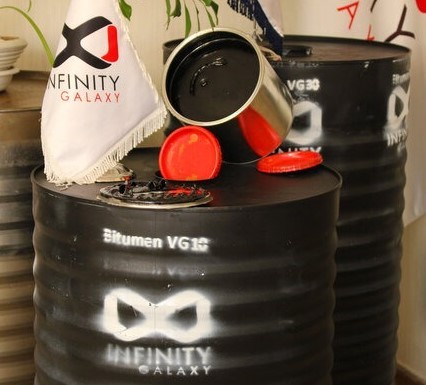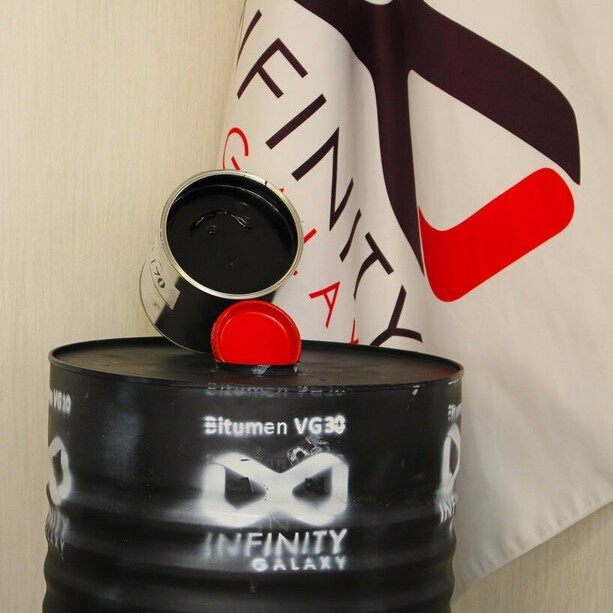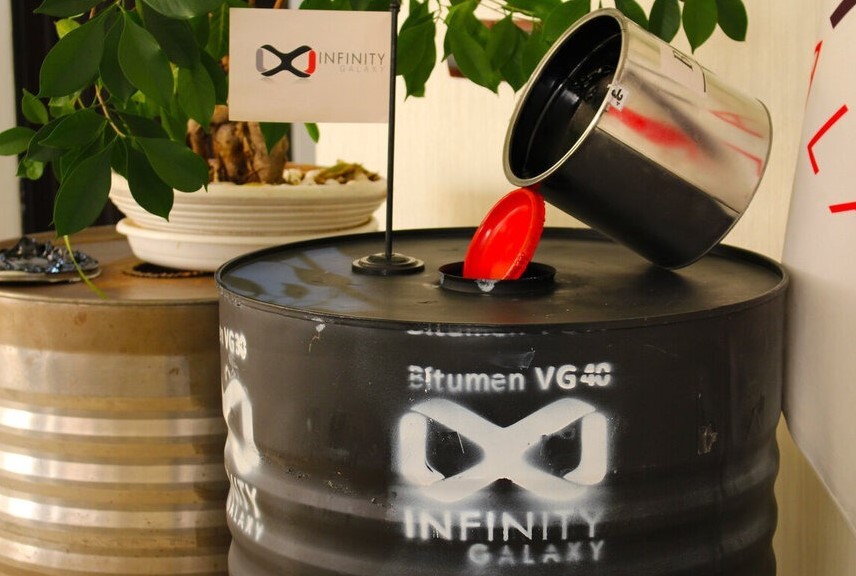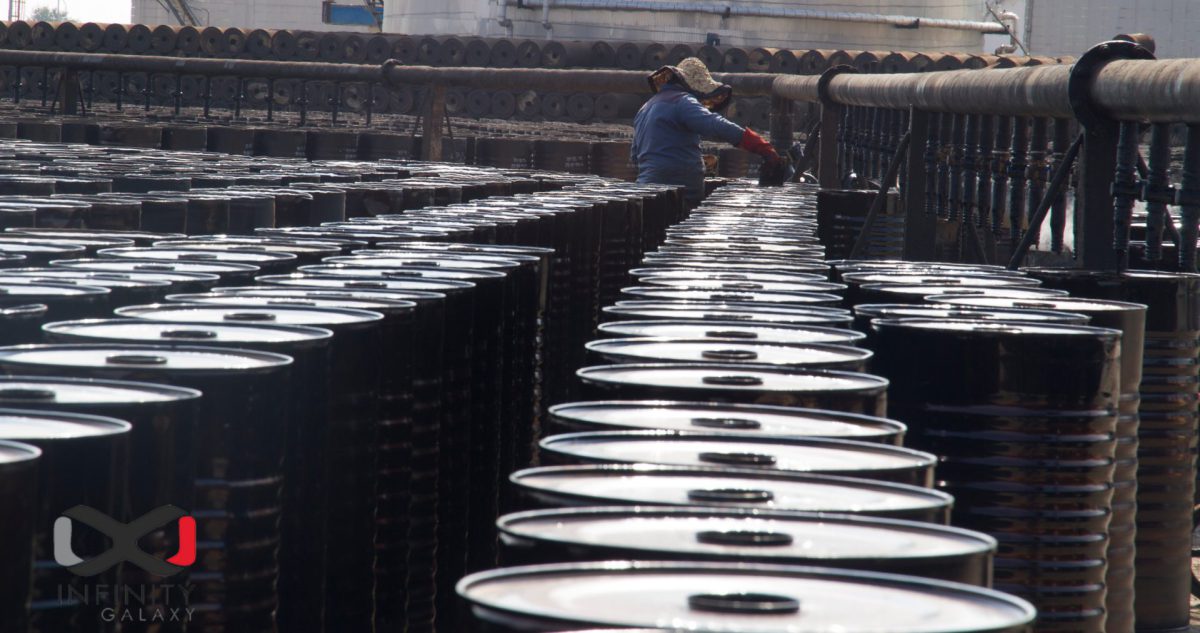Viscosity grade bitumen in four different types including VG10, VG20, VG30, and VG40 is the most widely used bitumen in India, which has been replaced by bitumen penetration grade according to the Indian Standard (IS:73).
This kind of bitumen is more reliable than others due to its advantages and properties. In the following, we will tell you more about the applications, descriptions, and specifications of each grade, and you will find the best VG bitumen that you need.
What is the Difference Between Penetration Grade Bitumen and Viscosity Grade Bitumen?
The difference between penetration grade bitumen and viscosity grade bitumen is that the penetration grade classification is based on the Penetration value in 25 ◦C, while VG system is based on Viscosity value in both 60 ◦C and 135 ◦C that shows it is suitable for both low and high temperature so the bitumen behavior in different thermal conditions can be predicted well.
Check out the bitumen penetration test and viscosity test of bitumen articles for more information about these two grading systems.
Classification of Viscosity Grade Bitumen
Viscosity test on bitumen results the classification of bitumen in a range of grades, including VG10 Bitumen, VG20 Bitumen, VG30 Bitumen, and VG40 Bitumen. The higher the number, the harder the bitumen in the viscosity grading system. To know more about VG’s specification and comparison of the properties of grades, see the table at the end of the article.
Check Out the bitumen types post to learn more about all bitumen grades and types like penetration grade bitumen and liquid bitumen.
Viscosity grade Standards
Viscosity Grade bitumen is determined by IS 73, ASTM and AASHTO. According to the IS, grading of Bitumen is changed from penetration grade to viscosity grade in 2006.
Read the article to understand the viscosity grade bitumen definition, applications and specifications.
Application of Viscosity Grade Bitumen
Generally, each of these viscosity grade bitumen has different application according to the two important factors such as climate and traffic conditions.
The important use of VG bitumen is due to the existence of two important properties of this material which are water impermeability and high adhesion.
Today, more than 250 different applications for VG bitumen have been considered that it seems to be impossible to replace them with other materials. In the table you can see different applications and properties of VG bitumen.
| Grade | Viscosity Range at 60°C (Absolute Viscosity) | Typical Applications ∞ |
| VG-10 Bitumen | 800-1200 | Recommended for road construction in cold regions Ideal for spraying Used in production of bitumen emulsion |
| VG-20 Bitumen | 1600-2400 | Used in cold regions for road construction |
| VG-30 Bitumen | 2400-3600 | Maximizes asphalt performance in hot regions A more reliable choice than bitumen pen 60/70 |
| VG-40 Bitumen | 3200-4000 | Works in areas with high traffic loads Well suited for road construction in hot weather |
Read the types of bitumen used in road construction article to understand the application of each bitumen grade in different layers of flexible pavement.
Advantages of Viscosity Grade Bitumen
Nowadays, VG bitumen is used instead of penetration bitumen, because it is tested more carefully in two phases by experts. First, the penetration of bitumen is measured at 25 ◦C that is the average temperature, but the results of this test is not reliable in the hot weather, so they measure the viscosity of bitumen at 60 ◦C and 135 ◦C. These tests tell us that:
- VG bitumen is suitable for a wide range of temperatures; 25 ◦C for fatigue cracking and 135 ◦C for construction, also temperature susceptibility can be determined
- Less number of tests save time and costs; according to IS, it has only 7 tests while penetration has 14 tests.
- Longer durability: the pavement made from VG Bitumen will have better performance because the Viscosity value at 135◦C gives a sufficient idea about mixing and compaction temperature and as a result pavement life is improved.
- Any two samples of the same VG bitumen would give similar rutting performance in hot summer unlike the penetration grade
- The minimum specified kinematic viscosity value at 135 ◦C helps to minimize the potential of tender mixes during construction
- VG bitumen is suitable for areas with high traffic loads
VG 10 Bitumen
What is VG 10 bitumen?
VG10 bitumen is the softest grade of viscosity bitumen. This type of bitumen is widely used for spraying applications and surface coating.
VG 10 bitumen means that your bitumen is also suitable for paving roads in a very cold climate instead of the old 80/100 penetration grade. The air temperature that matches VG10 bitumen ranges from -10 ◦C to 25 ◦C.
Due to the high temperatures in hot climatic zones, the application of VG10 cannot provide desirable rutting resistance.
This type of bitumen is also used to manufacture bitumen emulsions and modified bitumen products especially in India.
As a viscosity grade bitumen, VG10 has a better performance in cold weather.
If you’re interested in ordering VG10, check out VG10 Bitumen Price.

What are the Advantages in the Application of Viscosity Grade 10 Bitumen?
- It is suitable for temperature under 30 ◦C
- Its absolute viscosity is 800
- It has a higher Penetration Value in comparison to VG30 and VG40
Pay attention to the table below to see the bitumen VG-10 specification.
| Bitumen VG 10 Specification | |||
|---|---|---|---|
| Specification | Unit | Value | Test Method |
| Absolute Viscosity, at 60 ◦C | Poise | Min 800 | ASTM D4402 |
| Kinematic Viscosity, at 135 ◦C | CST | Min 250 | ASTM D2170 |
| Flash Point | ◦C | Min 220 | ASTM D93 |
| Solubility in Trichloroethylene | %WT | Min 99 | ASTM D2042 |
| Penetration Value, at 25 ◦C | 0.1mm | 80-100 | ASTM D5 |
| Softening Point | ◦C | Min 40 | ASTM D36 |
| Thin-Film Oven Test (TFOT) | |||
| Viscosity Ratio, at 60 ◦C | – | Max 4 | ASTM D4402 |
| Ductility at 25 ◦C | Cm | Min 75 | ASTM D113 |
VG 20 Bitumen
What is the meaning of VG 20?
VG-20 bitumen is a grade of viscosity bitumen used in cold climatic and high altitude regions. This grade of bitumen is suitable for road construction in regions with 30 to 37 °C average temperature.
For any inquiry about VG20, check out VG20 Bitumen Price.
In North India, vg20 is used for road construction in hot mix asphalt. The standard penetration value of bitumen viscosity grade VG-20 is 60 mm at 25 °C. The absolute viscosity of VG-20 bitumen is 1600 to 2400 poise at 60 °C.
VG-20 specifications are shown in the below table:
| Bitumen VG 20 Specification | |||
|---|---|---|---|
| Specification | Unit | Value | Test Method |
| Absolute Viscosity, at 60 ◦C | Poise | Min 1600 | ASTM D4402 |
| Kinematic Viscosity, at 135 ◦C | CST | Min 300 | ASTM D2170 |
| Flash Point | ◦C | Min 220 | ASTM D93 |
| Solubility in Trichloroethylene | %WT | Min 99 | ASTM D2042 |
| Penetration Value, at 25 ◦C | 0.1mm | 60-80 | ASTM D5 |
| Softening Point | ◦C | Min 45 | ASTM D36 |
| Thin-Film Oven Test (TFOT) | |||
| Viscosity Ratio, at 60 ◦C | – | Max 4 | ASTM D4402 |
| Ductility at 25 ◦C | Cm | Min 50 | ASTM D113 |
VG 30 Bitumen
What is VG 30 bitumen?
This bitumen is primarily used for the construction of extra-heavy bitumen pavements that have to bear significant traffic loads. Bitumen VG30 is the most widely used type of bitumen in road construction, insulation, building construction industries, and also in the production of cutback bitumen. It’s better to know that this vg30 bitumen can be used instead of 60/70 penetration bitumen grade.
Check VG30 bitumen price for more details on how you can purchase VG30.
VG30 Usage in India
VG 30 bitumen is a popular grade of bitumen in India. Indian importers prefer this type of bitumen because its performance in Indian road construction is proved. VG 30 grade bitumen is also used for plastic roads in India.
Because of having good thermal susceptibility, we use VG30 in areas that have a higher temperature. VG-30 bitumen is also suitable for use in hot and rainy weather conditions instead of bitumen penetration grades. The more viscose the bitumen, the fewer the chance of being affected by water.
What is the Minimum and Maximum Viscosity of VG-30?
According to the viscosity bitumen classification, 30 in VG 30 bitumen means the range of viscosity [(100 +- 20) * 30] in terms of Poise. It is possible to calculate the minimum and maximum of the VG30. The minimum viscosity at 60°C can be calculated like this: 80 * 30 = 2400 Poise while the maximum viscosity is also calculated by this formula 120 * 30 = 3600 poise.
The Difference Between VG10 and VG30
The difference between VG10 and VG-30 bitumen is in their viscosity level. Bitumen VG30 is more viscose than bitumen VG 10 and as a result, performs better in road construction in hot regions.

What are the Advantages in the Application of Viscosity Grade 30 Bitumen?
It is suitable for temperature above 30 ◦C
For a clayed soil, bitumen with higher viscosity is more suitable
VG30 is more suitable for road construction in a rainy weather.
Based on the ASTM, the VG 30 bitumen density is 1.01.
VG-30 specification is as below:
| Bitumen VG 30 Specification | |||
|---|---|---|---|
| Specification | Unit | Value | Test Method |
| Absolute Viscosity, at 60 ◦C | Poise | Min 2400 | ASTM D4402 |
| Kinematic Viscosity, at135 ◦C | CST | Min 350 | ASTM D2170 |
| Flash Point | ◦C | Min 220 | ASTM D93 |
| Solubility in Trichloroethylene | %WT | Min 99 | ASTM D2042 |
| Penetration Value, at 25 ◦C | 0.1mm | 50-70 | ASTM D5 |
| Softening Point | ◦C | Min 47 | ASTM D36 |
| Thin-Film Oven Test (TFOT) | |||
| Viscosity Ratio, at 60 ◦C | – | Max 4 | ASTM D4402 |
| Ductility at 25 ◦C | Cm | Min 40 | ASTM D113 |
| Specific Gravity, at 25 ◦C | kg/m³ | Min 1.0131 | ASTM D70 |
VG 40 Bitumen
What is the meaning of VG 40?
VG40 bitumen is used in areas in which high pressure comes from heavy traffic loads, such as intersections, near tolls booths, and truck parking lots.
Due to the high viscosity of this bitumen, it is more appropriate for improving resistance to shoving and other problems associated with higher temperatures and heavy traffic loads. It’s long time that industries use vg-40 instead of the penetration grade bitumen 40/50.
For more information about buying VG40, visit VG40 bitumen price.
The Difference Between VG30 and VG40
The difference between VG30 and VG40 is that the vg 30 bitumen is suitable for mild weather and vg 40 bitumen is better to use in hot climate. If you need to consult before buying vg40 contact us.

What are the Advantages in the Application of Viscosity Grade 40 Bitumen?
- It is suitable for a temperature above 40 ◦C
- Its absolute viscosity is 3200
- It is a preferred type of bitumen when heavy traffic load is expected
The absolute vg-40 bitumen viscosity is 3200 and the kinematic vg-40 bitumen viscosity is 400.
The below table shows the specifications of vg-40 bitumen:
| Bitumen VG 40 Specification | |||
|---|---|---|---|
| Specification | Unit | Value | Test Method |
| Absolute Viscosity, at 60 ◦C | Poise | Min 3200 | ASTM D4402 |
| Kinematic Viscosity, at 135 ◦C | CST | Min 400 | ASTM D2170 |
| Flash Point | ◦C | Min 220 | ASTM D93 |
| Solubility in Trichloroethylene | %WT | Min 99 | ASTM D2042 |
| Penetration Value, at 25 ◦C | 0.1mm | 40-60 | ASTM D5 |
| Softening Point | ◦C | Min 25 | ASTM D36 |
| Thin-Film Oven Test (TFOT) | |||
| Viscosity Ratio, at 60 ◦C | – | Max 4 | ASTM D4402 |
| Ductility at 25 ◦C, after thin film oven test | Cm | Min 25 | ASTM D113 |
How to Select the Proper Viscosity Grade Bitumen?
To select the proper viscosity grade bitumen based on the IS73 standard, the mean temperature of the field should be in one of the divisions of the following table:
| Grade | Suitable for 7 days Average Maximum Air Temperature ° C |
| VG 10 | < 30 |
| VG 20 | 30 – 38 |
| VG 30 | 38 – 45 |
| VG 40 | > 45 |
The mean temperature is equal to the average temperature of the hottest week of the year which must be for a period of at least 5 years.
Although there are days hotter than average in a year, it is important to consider the average temperature as an indicator in this classification. The frequency of hot days and heavy traffic leads to bitumen flow and reduced asphalt life.
How are products packaged?
According to your consideration of different factors, such as cost, logistics and environment, Infinity Galaxy team can provide you bitumen in various bitumen packing.
The economical case is jumbo bag, but you can choose new steel drums and bulk shipments.
Viscosity Grade Bitumen Specifications Table
| Viscosity Grade Bitumen Specifications Table | ||||
|---|---|---|---|---|
| Specification | VG-10 | VG-20 | VG-30 | VG-40 |
| Absolute Viscosity 60 ◦C, Poises, min | 800 | 1600 | 2400 | 3200 |
| Kinematic Viscosity, 135 ◦C, CST, min | 250 | 300 | 350 | 400 |
| Flash Point, ◦C, min | 220 | 220 | 220 | 220 |
| Solubility in Trichloroethylene, %, min | 99 | 99 | 99 | 99 |
| Penetration Value, at 25 ◦C | 80-100 | 60 | 50-70 | 40-60 |
| Softening Point, ◦C, min | 40 | 45 | 47 | 25 |
| Thin-Film Oven Test (TFOT) | ||||
| Viscosity Ratio at 60 ◦C, Max | 4 | 4 | 4 | 4 |
| Ductility at 25 ◦C, Cm, Min | 75 | 50 | 40 | 25 |
| Specific Gravity at 25 ◦C | – | – | 1.0131 | – |
Infinity Galaxy, Viscosity Grade Bitumen Supplier
Infinity Galaxy as an international bitumen supplier started its activity in 2012. During this period, it has tried to offer the highest quality of different types of bitumen based on international standards.
Infinity Galaxy has a long history of exporting bitumen especially viscosity grade bitumen to India and its neighboring countries.
If you are eager to know more information about VG and other grades of bitumen, just fill out the below form.
"*" indicates required fields






